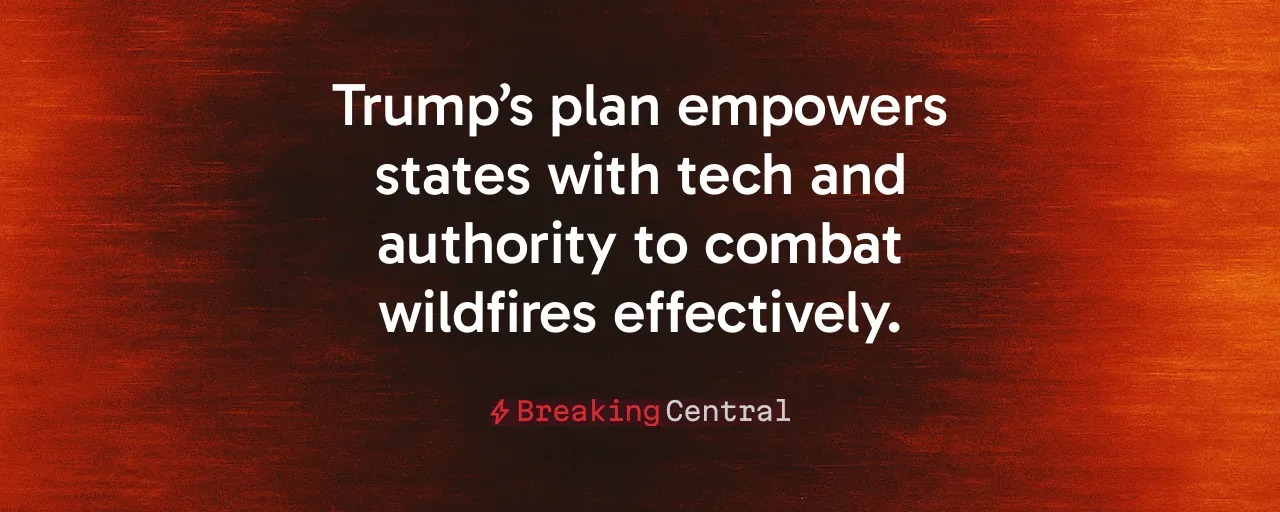Wildfires Demand Action, Not Excuses
Wildfires have torn through American communities, leaving scars that last generations. The January 2025 Los Angeles fires, which destroyed 15,000 structures, revealed a painful truth: years of bureaucratic neglect and poor planning have fueled these catastrophes. President Trump's executive order, signed on June 12, 2025, offers a lifeline, delivering practical solutions to a nation weary of destruction.
State and local leaders, who understand their regions' needs, have been trapped by federal regulations and outdated tools. The Eaton and Palisades fires exposed this failure, erasing homes and trust in the process. Why let Washington's delays hold back communities ready to act?
Trump's order breaks these chains, giving states the tools and authority to fight wildfires effectively. By unifying federal programs and embracing advanced technology, it prioritizes real outcomes: protecting lives, saving homes, and restoring reason to a broken system.
Technology to Outsmart Flames
The executive order taps into artificial intelligence, satellite imagery, and precise weather forecasts to transform wildfire response. Pilot programs in California and British Columbia, using integrated sensor networks, achieved 93% accuracy in detecting fire fronts, granting hours of vital warning time. Trump's plan builds on this, directing agencies to unlock historical satellite data and deploy AI analytics for faster threat identification.
Firefighters can stop blazes before they rage out of control. That is the power of this technology. Drones, IoT weather stations, and predictive maps equip states to act decisively. Some skeptics question the reliability of these tools, but evidence from the 2024 Gulf hurricanes, where AI slashed relief delivery times by up to 25%, proves their worth. Why hesitate when lives are at stake?
Trusting Local Wisdom
Trump's plan rests on a clear principle: those closest to the land know it best. States and local governments excel at managing their forests and responding to fires when given the freedom to act. The order supports this by simplifying federal partnerships and promoting practices like prescribed burns and biomass use to clear dangerous fuel loads.
Past successes prove this point. The 2003 Healthy Forests Restoration Act, which eased fuel reduction barriers, showed local control delivers results. Some advocate for tighter federal oversight, arguing states lack funds. Yet states like Florida and Texas, with their strong disaster response frameworks, thrive on local expertise. Why impose uniform rules when customized strategies work better?
Cutting Through Bureaucratic Overgrowth
Federal regulations have smothered wildfire prevention for decades. Lengthy reviews under the National Environmental Policy Act often stall urgent projects. Trump's order confronts this problem, instructing agencies to revise rules that block prescribed burns, fire-retardant use, and fuel reduction. The 2025 Fix Our Forests Act, which accelerates hazardous-fuel removal, complements this approach.
Critics warn that easing rules could harm ecosystems. However, responsible management of forests prevents uncontrolled fires, which cause greater devastation. European countries, with their well-maintained forests, face fewer severe fires due to proactive management. America can adopt similar strategies, balancing environmental care with practical action.
Leadership That Delivers
President Trump's resolve is evident in his actions. On his first day, he issued a memorandum to prioritize routing water to Southern California in the wake of the destructive wildfires. His March 2025 forest management order expanded timber use to curb wildfire risks. These steps reflect a leader who prioritizes results over rhetoric.
Some point to climate change as the primary fire driver, noting studies that link it to a 39% increase in U.S. burn area from 2006 to 2020. While warmer temperatures and droughts contribute, waiting for global emissions cuts will not save communities today. State-led management and active forest care offer immediate protection.
A Future Worth Fighting For
Trump's executive order sets the stage, and states and local leaders are positioned to act boldly. They can embrace AI, clear fuel loads, and rethink prevention strategies. The federal government aims to enable these efforts, providing support rather than imposing control.
The Los Angeles fires are a painful memory, and preventing their recurrence is paramount. By empowering states and slashing red tape, we can confront the wildfire crisis head-on. Will we seize this moment?
America faces a choice. President Trump has laid out a practical, forward-thinking plan. Let us rally behind it, ensuring our communities thrive and our lands endure for future generations.
